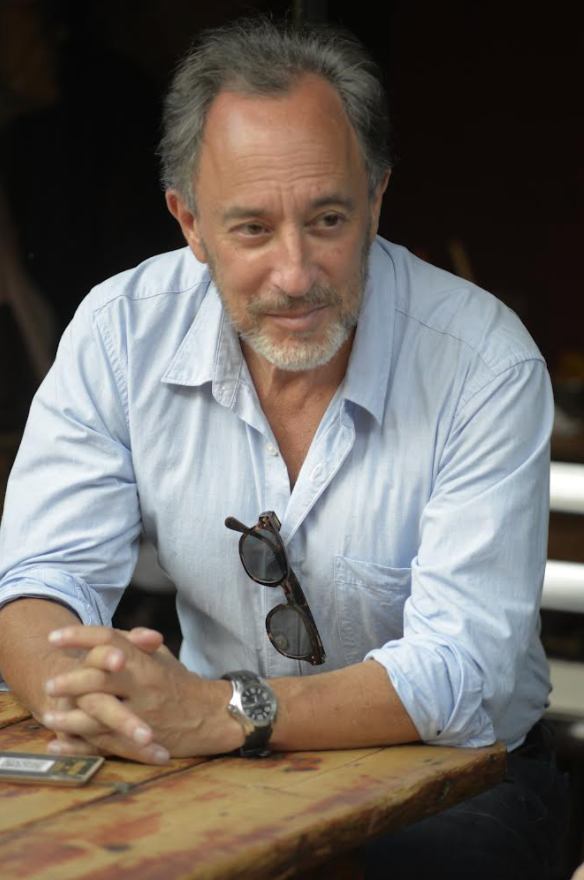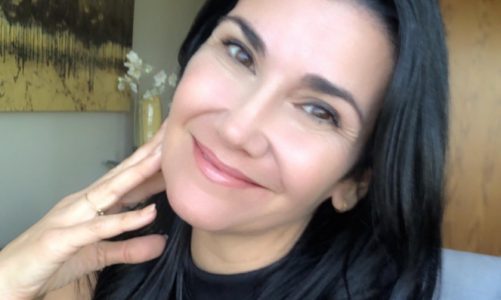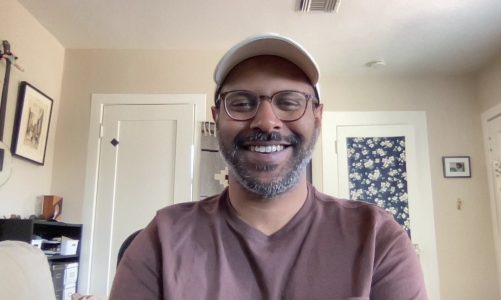
Michael Kimmelman is the architecture critic of The New York Times. He is a two-time finalist for the Pulitzer prize and has degrees from Yale and Harvard. He is currently the director of the NYT Headway project, which reports on progress in global challenges. Born and raised in New York City, Kimmelman’s journalism has frequently touched on issues of public space, infrastructure, housing, and the urban environment. In this interview we discuss the complexities of his position as critic and the debate around building new housing in America.
Charles Alaimo: You started your career as a journalist after pursuing the beginnings of an academic career. What was the transition like from academic-style writing to journalism?
Michael Kimmelman: After I graduated from Yale, I came back to New York and landed a job, by chance, at a magazine called Industrial Design (ID). ID was going through a rough time, which meant they would hire someone new like me. Under normal circumstances, I would have had no right to be an editor there. It was an incredibly lucky experience for me; I was thrown right into the field. They had a small staff and a bunch of people who could school me in what it meant to actually do journalism. And I started to write! I became a writer for different magazines. So, by the time I went to Harvard, I had a foot, or at least a few toes, out the door of academia. I already had a journalistic career, as it were. It was tiny, but it was meaningful to me.
As somebody who assumed I would become an academic, I wrestled with the question of audience. What is the purpose of writing? Not just for whom, but to what end? I grew up in a very left wing household; my parents read all sorts of lefty journals. (They thought The New York Times was run by the CIA, which of course made it seem really, really interesting.) They gave me a sense that writing was a kind of social and ethical undertaking, that it was partly about trying to speak to the ills of society, to stimulate a conversation around what is possible. I felt there was something limiting about an academic audience. I missed having that engagement with a wider public, and a feeling that I was able to contribute in a way that was immediate and tangible. Now, I love teaching. And I respect the idea of doing serious, in-depth, long-term work. There are also many academics who are crucial members of the public discourse. But the path to a larger, wider public was clearer to me through a career in journalism than it was by staying an academic.
I first noticed your writing in the Times because of your references to Robert Moses. I remember thinking, “Wow, this guy definitely has read The Power Broker.” So, what is your relationship to Robert Moses, his critic Jane Jacobs, and this struggle in New York’s past? How do you conceptualize the housing crisis happening today through that lens of history?
I did read The Power Broker. I actually know the author, Robert Caro, who is just a godlike figure to any journalist or biographer. He has an enormous amount of my respect.
I grew up in Greenwich Village, where Jane Jacobs lived. I even knew Jane Jacobs a bit. I related to her thinking about how communities and cities work, because she often wrote about my own neighborhood.
As I said earlier, I come from a very politically active family— members of my family had actually been involved in opposing Robert Moses’s plans to drive a highway through Washington Square Park. So I grew up in an environment that made me naturally interested in this debate, and taught me at least one side of the argument.
By the time I had started my job as the architecture critic at the Times, the thinking about Moses had changed somewhat. Partly because of The Power Broker, he had come to be seen as this great enemy of healthy urban life. But his legacy was really much more complicated and interesting than a simple “good or bad” distinction. He wasn’t just the enemy of Jane Jacobs and “people power.” He gave us amazing numbers of great parks and public works. More recently, this has been —not entirely wrongly— overshadowed by all the destructive and racist things he did and the neighborhoods he destroyed.
But I was interested by the questions Moses raised: How can we make big change? How should we think about improving the city, especially the lives of the underserved, in neighborhoods which are historically ignored? How do we make really big change, change at scale, without triggering people’s fears of another Robert Moses-style government? The pendulum swings, [I think,] in public affairs and politics, and it has swung from Moses to Jacobs. But much of what Jacobs created has also unintentionally hindered our ability to make progress. It’s harder now to improve the neighborhoods and lives of the many people in New York City who didn’t grow up in nice middle-class Greenwich Village.
The thing that Caro, writing in the 1970s, was not addressing is how to find the right balance between the human scale, curb-level understanding of urban life that Jacobs represents and the kind of ambition and institutional power that allow us to make change in a meaningful way. That’s a conversation we need to have in many areas, not just urban affairs. We’re stuck in a lot of aspects of our society. We’re stuck with small incremental changes, or even no change at all. If we want to turn our cities into places which grow and welcome people, which are truly cosmopolitan, open, and available to everyone —if we want to do big things— we have to think a little differently.
How do we stop this gridlock in housing while also respecting people as stakeholders in their own communities?
The pendulum has swung towards Jacobs’ argument, as I said. She wanted to prioritize the power, knowledge, and understanding of urban life that people living in neighborhoods actually have. She was combating this “30,000 foot view” that, under Moses, had destroyed many neighborhoods and misunderstood the way people live.
As a result of this change, though, a new and unexpected alliance has emerged. First, there are underserved people who feel threatened by any new developments because they fear displacement. These people have the sense that their neighborhoods are becoming too expensive and unfamiliar to them. It’s often called gentrification, but really the word is displacement. And they often have reasons to be fearful because cities don’t provide protections for them. These people have found a kind of common cause with another group: predominantly white and wealthy NIMBYs (Not In My Back Yarders) who don’t want any kind of change to their neighborhoods, sometimes for reasons that include race or class. This alliance has thwarted the development of more affordable housing in cities that need it badly – ultimately hurting the poor and underserved, as usual.
I think housing may be the single greatest problem that we face as a society, because it is determinative of so many other things: education, health, opportunity. Jacobs’ original vision, that “people power” should replace institutional power, has, in increasingly cases, unintentionally promoted gridlock. It has replaced ground-up activism, a good thing, with obstructionism. I don’t know what the solution is, but I see my job as a journalist as part of it: to describe the problem and to try to unpack its dynamics. Hopefully in doing so, I can allow people to understand the problems, and perhaps find ways around them.
Look, the more diverse our neighborhoods are, the more opportunity there is for people of different economic classes and backgrounds, which is what makes a city vibrant. I understand the anxiety around seeing one’s beloved neighborhood change but I believe we can preserve what needs preserving while acknowledging that cities are living organisms that need to evolve and adapt. This is why I want to write about examples of new housing projects and changing neighborhoods that are working.
Tell me how you balance your aesthetic critique of a building vs. its role in public affairs.
There are a lot of different ways to do my job. I respect other viewpoints about what an architecture critic should do. I come to it with a particular lens. I believe that buildings are not sculptural objects. They’re partly cultural artifacts, and even works of art at their best, but they’re also elements of communities, cities, and neighborhoods. They’re occupied. They’re used. And the beauty of architecture is precisely that. It has to do more than a work of sculpture. It has to function; it has to improve the lives of the people who interact with it. To discuss architecture, it’s inevitable that one must discuss the variety of ways in which it is produced, the way it is consumed, and the fact that it lives a life that changes in public.
There are other ways one can talk about architecture that are purely within the realm of material and aesthetic history. But especially if you’re dealing with public architecture and things like affordable housing, there emerge questions about the premium of making Architecture with capital A. Improving those aesthetic and qualitative features of a project like that also increases the cost. The question of the value of architecture then becomes very specific. You have to weigh the cost of improved aesthetics against the value of, say, additional affordable apartments. Is it worthwhile? And to whom? How do you measure it? To me, these have been among the most interesting and important questions I can ask. There is no simple or single answer, obviously. What is the civic value of a project? What is the value in terms of joy, local pride, symbolism, of advancing ideas in a society? Homelessness is on the rise in cities like New York and Los Angeles. In many cities, over half the population is paying close to half their income or more on rent. That is unsustainable. We have to find ways to build more housing, and, as a society, help pay for those who can’t afford a home, because in the end, if we don’t, we pay much more in all sorts of ways – literally and morally. It costs many times more to pay for an unhoused person who needs emergency care, policing, social services and so on than it does to house that person.
We’re at a point at which we have to make hard decisions as a society about whether we care about each other, and about what kind of communities and cities we want to build. Ultimately we are what we build. It is how we will be remembered.
*This interview has been edited for length and clarity.





Well written. OK I am a little biased, but really it is brilliant.